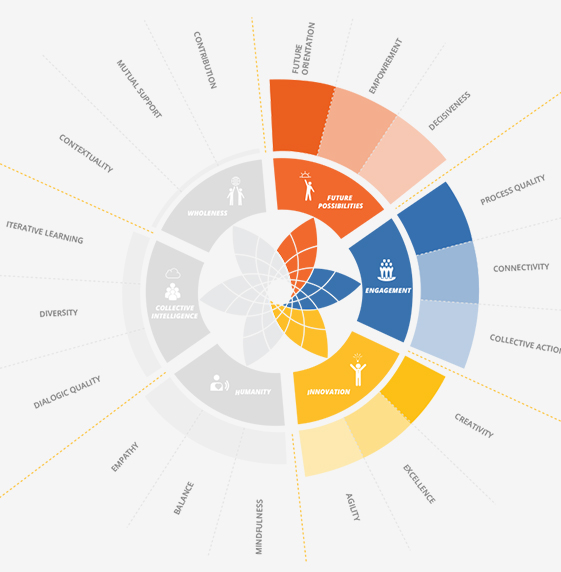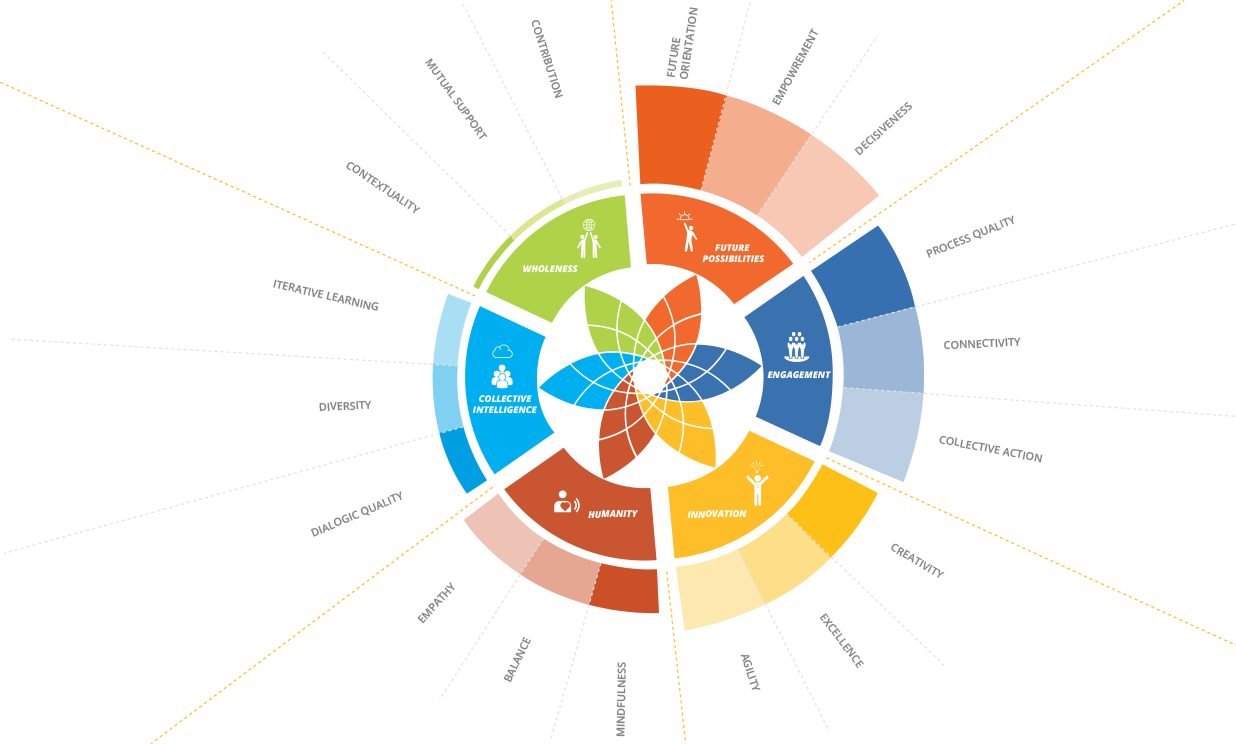
Nadeem is leading a complex strategic sustainability initiative between NGOs, development cooperation, the public sector and the private sector. The goal is to help small-scale African farmers in four countries improve production and access to international markets. He knows about the life of small-scale farmers first hand, has a degree in sustainable agriculture and is known as a “people-person”. It is the first time for him to coordinate such an ambitious project and his mission is to make a real difference for the life of the small-scale farmers.

When Nadeem used the tool identify your competency pattern he noticed that his strongest dimension was Collective Intelligence, followed by Humanity and Wholeness as he loved to look at the bigger picture. He was a brilliant facilitator and felt most at ease when he could help people have a fruitful dialogue and better interactions. Yet, he realized that a new challenge was awaiting him—the actual management (not facilitation) of a complex project with high funder expectations, a private sector requesting key performance indicators, and implementing partners that were not used to being tightly managed. He identified Future Possibilities as his personal development area as he saw that the challenge was not only facilitating, but also getting the job done and being accountable for ambitious targets set. Yet, when he looked at his strength, he decided that he could use them as a starting point. As a “people-person” he decided to embark on an inquiry and engagement process with the different partners and stakeholders in the project. He termed the exercise ‘stakeholder interviews’, a simple process that required not more than 10 minutes time from each of the interview partners. He chose ten people from the range of partners to represent the variety of stakeholders. He set up phone calls or meetings and only asked a single question: From your point of view, what is the single most important move that will make this collaboration initiative a success? He used the action plan tool not for planning, but for filling in interview results allocating them to the different dimensions. The outcome was striking. It showed the frightening disparity of opinions about how to run the project, but it also became clear that every stakeholder had a piece of truth that hinted at one or several of the dimensions of the Compass. In addition, he used the tool identify a challenge pattern to assess how he saw the collaboration culture. He realized that indeed the biggest challenge in the project was dialogic exchange and iterative learning (Collective Intelligence), followed by a clear weakness in Innovation and a total lack of mutual support (Wholeness).
Nadeem presented the interview results at the next stakeholder meeting and showed the reference to the compass dimension. Although some of the implementing partners looked with considerable skepticism at the different Compass dimension, they began to see how the stakeholder views complemented each other. But this was not all. Nadeem had decided to use his strength in the best possible way: he suggested to establish regular learning and innovation events, where all partners presented their progress and challenges, where good practices were exchanged and where innovative approaches were presented. Within a year the collaboration culture had changed. The public sector was more engaged, company representative participated in dialogues with farmers, and the implementing agencies had much more success in getting farmers engaged in the initiative.


Peter is the Executive Director of DiversAct, an international NGO in Europe. The mission of the organization is to put biodiversity and natural resource management high on the public agenda.
Read More
Andrea is the sustainability manager of a European energy supply company that intends to enter into the renewable energy field, but still runs coal and a few nuclear energy plants.
Read More
Celine is a water engineer and the chair of the inter-ministerial coordination committee for the implementation of the drinking water policy in an African Country.
Read More
Nadeem is leading a complex strategic sustainability initiative between NGOs, development cooperation, the public sector and the private sector.
Read More
Mike is the CEO of medium-size textile company. When he joined the company, sustainability issues were still seen as belonging to the communication department.
Read More